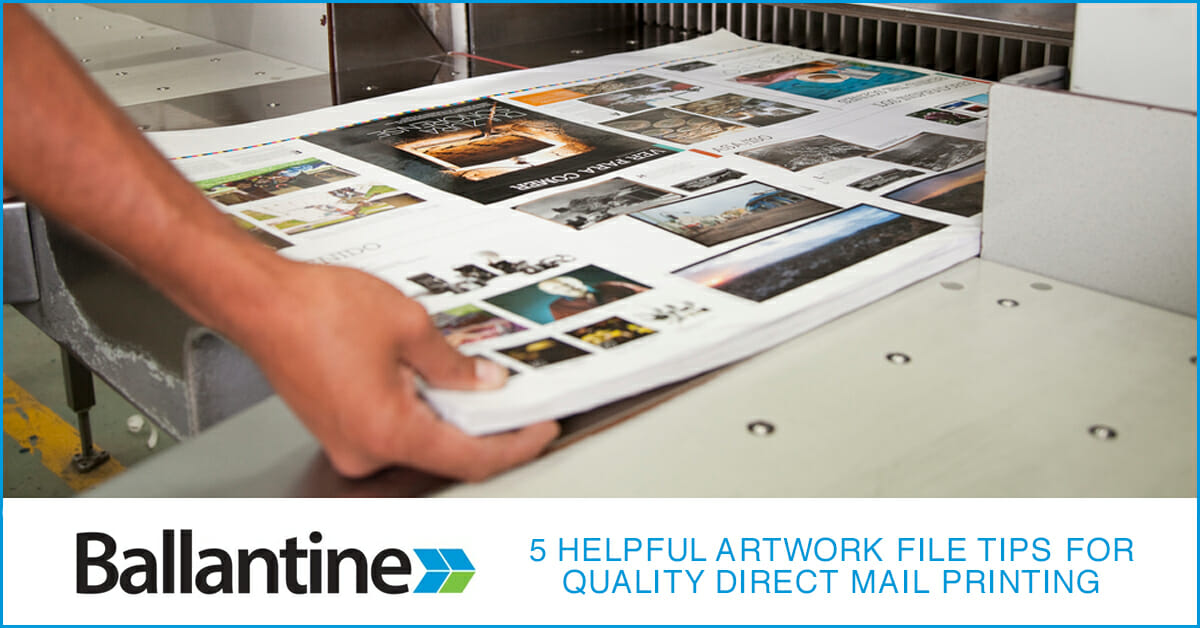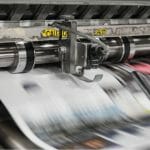We have a new white paper to share with you titled:
Balancing Quality, Speed, and Cost with Advances in Printing Technology
This white paper provides an overview on three advances in digital printing technologies we think are worth highlighting including digital printing, high-speed inkjet personalization, and web-based print portals.
There are 3 ways to digest this free content:
- Click here for a PDF download.
- See below to view in our reader.
- Scroll down for a “transcript”.
Please share this white paper with anyone you think would be interested. And we encourage feedback!
Introduction
Despite the advances in online and digital marketing, traditional printed media is still a critical part of many marketing strategies. High quality printed media with an attractive look and a clear message is the centerpiece of direct mail marketing advances. While a piece may have a compelling message and call to action, it is likely to be overlooked or discarded if the recipient feels it’s not attractive or looks “cheap”. Because of this, direct marketers often spend a lot of time and money developing attractive direct mail pieces for their campaigns. However, as technology evolves and customers become harder to target, printing technology has also been evolving, and the quality and options available are much higher than they were even five to ten years ago.
This white paper will provide an overview on three advances in printing technologies we think are worth highlighting, including:
- Digital Printing – Method of printing that uses static charges to transfer either toner or electro ink to substrate.
- High Speed Ink Jet Personalization – Adding customized information to high volume mailings, such as name/address, content related to a demographic, or a personalized URL (PURL).
- Web-Based Print Portals – Online portals that employees in multiple locations can access to process print jobs.
These three advances have resulted in major leaps forward in personalization, print quality, and speed, while lowering print costs:
- New technologies that produce better image quality
- New technologies that are more cost efficient
- New technologies that are great for short-run print campaigns
- New technologies that allow for full-scale personalization on high volume campaigns
- New technologies that allow for quick project turnaround time.
Digital Printing
Speed vs. Quality vs. Cost
The advent of digital printing has allowed for a great deal of customization of direct mail pieces that were previously limited by the constraints of offset printing. However, the quality of digital printing technology has historically been just acceptable. And when digitally printed personalization was added to a mail piece, it often looked like an afterthought, particularly since it was adjacent to high-quality offset printing on the same page.
However, digital printing has evolved significantly over even just the last five years. Technology from digital presses likes HP Indigo, Xerox iGen, and Xeikon now makes it possible to digitally print highly personalized mail pieces at offset printing quality and at a reasonable cost. For example, the Xeikon Cheetah print system lives up to its name, with high-quality 5-color printing at speeds up to 98 ft/min at a resolution of a true 1200 x 3600 dpi.
Because the quality of digital printing technology has increased so much, it can often be used for all parts of the media; both the static content and the personalized content in many cases. This results in decreased print costs, faster turnaround times, and overall higher quality. Digital printing is much more cost effective for smaller print runs, resulting in significant savings for this type of project. Marketers no longer have to sacrifice quality in order to maintain tight production deadlines.
Digital Printing Case Study
A timeshare company was looking to create a highly variable digitally printed mail piece, but they wanted more flexibility with the format and size. They wanted to create a mail piece that would stand out from other mail. We used a Xeikon digital print system to create this piece because it uses paper on rolls. This allows us to print longer formats, and we could design the print pieces to be exactly the size that the company was looking for.
High Speed Ink Jet Personalization
Customization vs. Quality
In the early days of direct mail, campaigns consisted of static media, with every recipient receiving the exact same piece. All recipients were receiving the same message; there was no segmentation or personalization available.
However, personalization is a vital part of today’s direct mail. Recipients need something more than a compelling, yet generic message to catch their eye and result in a conversion. Historically, direct mail pieces were generated via offset printing to maintain high quality of the static components, while the personalized content was added via a subsequent print run via laser printer or ink jet printer. Only a single color was available for personalization: black. Whether it’s simply the printing of an address field, or the addition of information specific to the recipient or his/her demographic, historically, quality and speed of this personalized information were not very good.
Today’s high speed ink jet printing processes are a far cry from their predecessors. With digital printing equipment from manufacturers such as Indigo and Xeikon, marketers can get the best of both worlds, and in many cases with quality equaling that of offset printing. Current processes are run at high speed, up to 500 feet per minute via a roll-fed system. These systems can print in full duplex, meaning both sides of the media in four color. This means that the full piece can be printed and personalized in one pass, resulting in a significant reduction in print costs.
High Speed Ink Jet Personalization Case Study
An insurance company had a direct mail project that included three different products for 35 different organizations. This meant 105 different versions with 105 different mail streams if printed traditionally, resulting in higher printing, mailing, and postage costs. The solution here was to use high speed ink jet printing, resulting in only three different mail streams through a combination of on demand personalization and four color printing.
Web-Based Print Portals
Ease vs. Consistency
For a company with multiple locations and/or multiple representatives, such as a franchise or financial services company, it’s important that each location or representative personalizes the company message to its location while maintaining brand consistency. Managing print campaigns for this type of business structure was historically very complex. It was challenging to keep track of orders by location, ensure consistent brand delivery, and manage campaigns across a local, regional, or national area.
The introduction of web-to-print or web-based print portals has provided a one-stop print management solution for these type of companies. Multiple offices – multiple users – one brand. A custom branded web-based print portal helps companies solve the accountability and consistency issues that previously plagued organizations without centralized control over collateral production.
Web-based print portals can allow authorized users to log into a common site, order pre-printed branded products, customize direct mail templates, and set up the print/mail process. A corporate admin can be assigned to review and approve all incoming print requests to ensure brand consistency. Once submitted, orders are usually printed and shipped within 48 hours.
Some web-based print portals allow for users to upload their own content to the portal. Others employ a portal based publisher that allows users to create content within the portal using pre-developed templates that include company branding and campaigns. Many web-to-print vendors go beyond paper products to include branded items such as shirts, personalized items such as name tags, and other promotional merchandise. A single portal for ordering all branded content simplifies accounting and tracking as well.
Web-based print portals can also reduce storage costs, as materials can be printed on demand. Companies don’t have to maintain a large inventory of marketing materials, or have pre-printed materials go to waste as the content needs to be updated. Users can order just what they need, right when they need it.
As all print jobs are managed through the same portal across the entire brand, it’s easy to track usage, expenditures, and ROI by location and across the company as a whole. Brand identity and quality are maintained. Contact us today for more information!
Web-Based Print Portals Case Study
A real estate company that manages millions of square feet of retail properties wanted to use direct mail to advertise its vacant properties. A web-based print portal allowed them to store their templates and customize and mail them when needed. The web portal has been a huge success for this company, and they’ve been using it continually on a weekly basis.
I'm the Director of Digital Services and Partner at Ballantine, a family-owned and operated direct mail & digital marketing company based in New Jersey. and started in 1966 by my great uncle!





